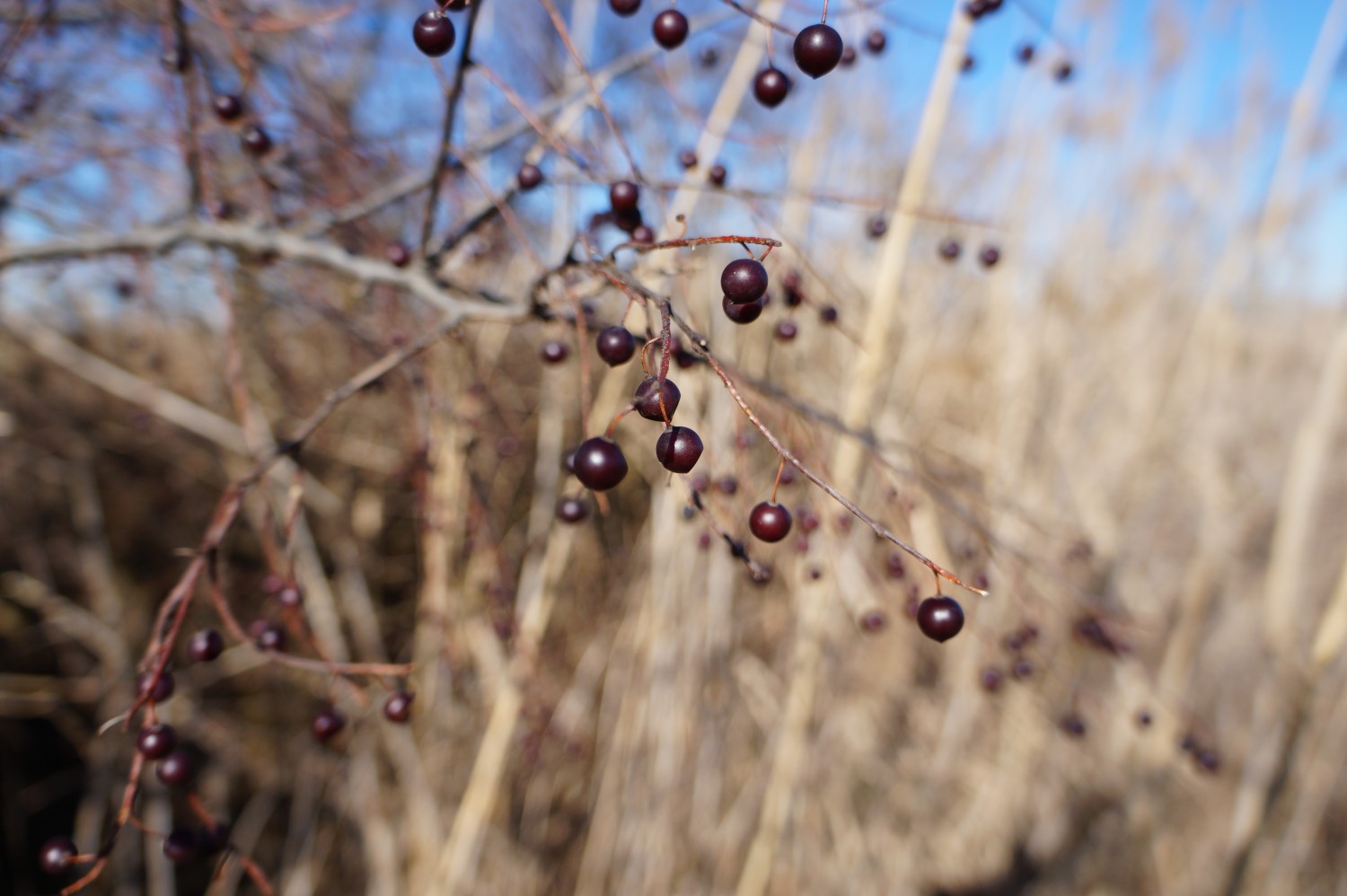On a frigid evening in late winter, I love to sit in my favorite chair beside a blazing fire in the fireplace. Dave lies on my feet, and I revel in the warmth, and the popping, fizzing, roaring, chuckling, murmuring of the fire. The wood we’re burning is a mix of things gathered from downed limbs, dead trees, and, in particular, a mulberry and a hackberry that we cut down last summer to make way for a new shop. An armload of wood includes some yellowish-gray pieces that cleaved cleanly into sticks for the fireplace. They’re from that hackberry tree that once hosted abundant life.
The hackberry (Celtis occidentalis) is a very hardy and widespread native of North America. It thrives from Canada to Mexico in extreme heat and cold, drought and to some extent flooding. It is happy to grow on Owl Acres in the fence rows and at the edges of the woods where the mower doesn’t go.
We think of the hackberry as a weed tree because it sprouts up wherever a bird dropped a seed. It grows quickly, reaching 40 to 60 feet. It spreads its limbs and roots some 20 feet in all directions, embracing a wide variety of life.
In the spring, as the leaves come out, it sets its little green flowers to catch pollen on the wind. By the fall, it has produced pea-sized purple fruits. Like cherries, the fruits each have a single seed surrounded by a thin pulp. in times past various native tribes ate them, dried them, or mixed them with dried meats for flavor and nutrition. The berries are unusually high in fat, carbohydrates and protein calories, making them excellent food. They hang on the tree into late fall and winter, waiting for birds and squirrels to come along and eat them, helping to disperse the seeds.
When I consider a tree, I think of it as hosting wildlife. Birds and squirrels nest in it and eat its berries. Birds roost there at night. Squirrels race up and down chasing each other, or escaping a predator. But there is an entire realm of activity that goes on more or less unnoticed. The hackberry is an excellent example of the complex life going about its business beneath our human radar. The healthy tree’s roots, bark, branches and leaves host and respond to a variety of life forms. When the tree is dying, another army moves in to recycle its nutrients. Who are all these creatures who live and work on this one tree?

Probably the most noticed result of the hackberry’s inhabitants is known as witches’ brooms. Becoming obvious after the leaves fall, witches’ brooms are abnormal clusters of twigs growing at the ends of the branches. The culprits that cause the brooms to form are an unlikely pair including a mite and a fungus. Exactly how this works is not clear, but the powdery mildew fungus colonizes the young twigs and buds. Meanwhile, the mites have overwintered in the tree’s bark. When spring comes, the females make their way to new buds and lay their eggs there. Between the mites and the fungus, the tree has a problem. It fights back by creating these witches’ brooms. Hackberry trees have been considered undesirable for landscaping because of the appearance of the witches’ brooms.

Photo by Judy Gallagher
The tree also hosts butterfly larvae, including that of the Hackberry Emperor and the Tawny Emperor. The butterflies don’t damage the tree, but, along with the mites, four species of psyllids, or jumping plant lice and at least 15 types of midges cause the tree to create galls on its leaves where the larvae are chowing down. This suits the larvae just fine, because the tree builds a house for them in the form of a gall. This growth of abnormal plant tissue encases the larvaeand keeps it safe while it grows. Fungi play other roles in the hackberry’s life as well. Several species of leaf-spot fungi live on the leaves. All this living happens without major damage to a healthy tree.

Photo by Sam Kieschnick

Photo by Wm3832
The hackberry tree develops a deep root system, to depths of 10 to 20 feet belowground. One type of fungus, which is present in most tree root systems, is called mycorrhizal fungi. It develops a net around the hackberry roots. The fungus then exchanges nutrients with the tree’s roots and stores excess nutrients for future use. In turn, the tree feeds the fungus with nutrients it created during photosynthesis. Other types of fungi live benignly on the surface of the roots until the roots are damaged. Then the fungi move in to break down the root tissues and begin the process of nutrient recycling as the tree dies.

The bark of the hackberry is light brown to silvery gray. It has a cork-like appearance with deep, layered ridges and random warty bumps. It provides shelter and habitat for many tiny creatures in addition to its pests, such as ants and spiders. And this is only the beginning of the catalog of life thriving on one hackberry tree.
Feature Photo by Jozefsu
